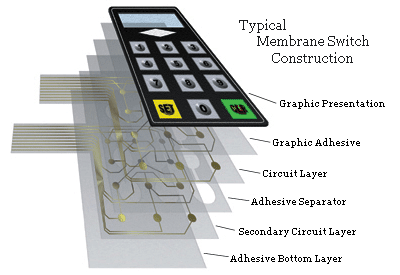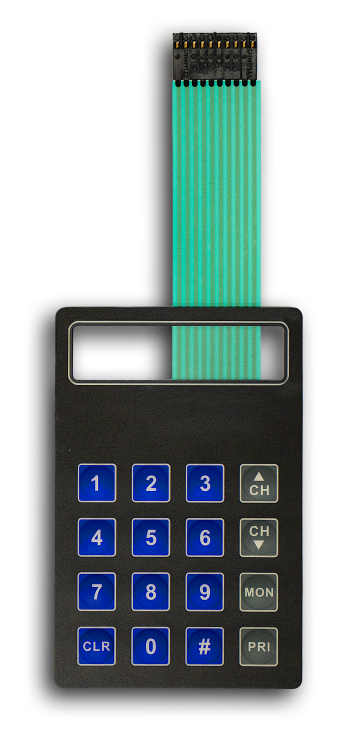Find High-Quality and Cost-Effective Solutions with Membrane Switches Modern Technology
Membrane Layer Switches Explained: A Comprehensive Guide to Their Benefits
Membrane changes represent a flexible and advanced solution for producing customer interfaces across a selection of fields. Their multilayered design not only makes certain functionality through easy pressure however additionally provides considerable advantages, such as longevity and customization. As markets significantly look for reliable and dependable control interfaces, understanding the particular benefits and applications of membrane changes becomes vital. Nevertheless, the complexities of their layout and implementation existing special difficulties that value closer evaluation. What elements should be taken into consideration to fully take advantage of their potential in contemporary applications?
What Are Membrane Layer Switches?

When pressure is applied to the membrane layer switch, the layers make call, completing an electric circuit. This simple system permits a variety of applications, from consumer electronic devices to commercial equipment. Membrane switches are commonly designed to be immune and water resistant to dust and pollutants, making them ideal for atmospheres where longevity is important.
Furthermore, the flexibility of the materials utilized in membrane switches helps with ingenious designs that can conform to different shapes and dimensions. This adaptability adds to their popularity in diverse areas, consisting of clinical gadgets, automobile controls, and home appliances. Generally, membrane changes represent a vital component in contemporary individual interface innovation, bridging the gap in between users and digital systems.
Trick Benefits of Membrane Buttons
Amongst the myriad of interface options available, membrane layer switches stand apart for their unique mix of benefits. One of the main benefits is their compact and light-weight style, which permits combination into a large range of gadgets without adding substantial bulk. This is particularly advantageous in applications where area is restricted.
In addition, membrane switches deal durability and resistance to ecological variables. They are typically created with materials that can hold up against wetness, dirt, and various chemicals, making them ideal for severe problems. This toughness adds to a longer lifespan contrasted to traditional mechanical buttons.
Another considerable benefit is the flexibility in modification. Membrane buttons can be printed with different graphics, shades, and structures, enabling customized layouts that meet certain branding or functional demands. This adaptability prolongs to the variety of layers and circuit alternatives, providing designers with numerous configurations.
Additionally, the responsive feedback given by some membrane layer switches over enhances customer experience, making them a lot more instinctive to operate. Finally, the simplicity of cleansing and upkeep better solidifies membrane switches as a functional choice in both customer and commercial applications. Membrane Switches. Generally, these crucial benefits make them a recommended solution for numerous developers and manufacturers
Applications in Various Industries
How do membrane switches discover their area throughout varied sectors? Their versatility and functionality make them important parts in sectors varying from medical care to customer electronic devices. In clinical devices, membrane layer buttons are made use of for their convenience of cleansing and resistance to contamination, guaranteeing hygiene in environments where sterility is vital.
In the consumer electronics market, these buttons offer sleek, user-friendly interfaces that boost item aesthetic appeals while preserving sturdiness against wear and tear. Automotive applications gain from membrane layer switches as well, where they are made use of in control panels and control panels, offering trustworthy efficiency in challenging conditions.
Furthermore, industrial equipment uses membrane switches for control panels as a result of their effectiveness, capacity to stand up to extreme settings, and customizable designs that provide to particular functional requirements. The food industry leverages membrane switches for their convenience of use and resistance to spills, making certain functional performance in fast-paced settings.
Ultimately, the adaptability of membrane layer switches over throughout these varied applications emphasizes their vital function in contemporary innovation, boosting customer communication while fulfilling industry-specific needs. Their continued advancement promises additional assimilation right into emerging areas and ingenious items.
Design and Customization Choices
The design and personalization choices available for membrane layer buttons are important for tailoring interfaces to satisfy particular customer requirements and aesthetic choices. These buttons can be designed in numerous shapes, dimensions, and designs, enabling seamless integration right into varied applications. The adaptability in layout means that suppliers can develop distinct interfaces that boost usability and keep brand identity.
Custom-made colors, textures, and graphics can be applied to the surface of the membrane button, giving a chance for branding from this source and user involvement. Furthermore, backlighting options, such as LED lighting, can be included to boost exposure in low-light problems, thus improving capability.
Useful elements can also be customized, including tactile feedback and actuation force, which can be adjusted to suit different individual interactions. The choice of materials, such as polyester or polycarbonate, enables variants in longevity and ecological resistance, dealing with the details needs of various industries.
Inevitably, the substantial layout and modification abilities of membrane layer buttons enable business to create visually enticing and user-friendly user interfaces, ensuring that their products fulfill both visual and practical requirements effectively. Membrane Switches.
Considerations for Execution
Implementing membrane layer switches needs careful factor to consider of numerous elements to ensure optimal performance and individual experience. Among the key considerations is the designated application atmosphere. Elements such look at more info as exposure to moisture, severe temperatures, and chemical substances can dramatically affect the button's performance and long life. Picking products that endure these conditions is important.

An additional important facet is the switch's design and format. Making sure that the tactile comments and actuation force align with user expectations boosts functionality. Performing customer testing can provide valuable understandings right into the optimum layout.
Additionally, compatibility with digital components must be examined. The switch's circuitry need to align with the general system style, making sure trustworthy signal transmission and lessening disturbance.
Moreover, manufacturing approaches and expenses should be evaluated. The selection in between customized designs and conventional versions can lead and affect both budget plan time.
Last but check here not least, consider repair and maintenance. Membrane layer buttons might need particular cleaning and care treatments to preserve their look and capability gradually. By addressing these considerations, companies can apply membrane layer switches that meet their functional needs while supplying a positive customer experience.

Conclusion
Finally, membrane layer changes stand for a resilient and functional control interface suitable for a vast array of applications across multiple sectors. Their compact design, resistance to ecological aspects, and adjustable functions boost individual experience while meeting certain branding demands. As innovation continues to evolve, the importance of membrane buttons in modern devices continues to be substantial, using both functionality and visual charm. Future improvements will likely better increase their applications and performance in different atmospheres.
Membrane changes stand for a innovative and flexible service for creating user interfaces throughout a variety of sectors.Understanding the fundamental components of contemporary electronic interfaces, membrane layer switches are a kind of customer interface tool that consist of flexible, slim layers of material. In general, membrane layer switches stand for a crucial element in contemporary user interface modern technology, connecting the gap between individuals and digital systems.
Among the myriad of user interface alternatives available, membrane layer changes stand out for their special mix of advantages.The style and customization choices readily available for membrane switches are critical for customizing interfaces to fulfill certain customer demands and aesthetic preferences.